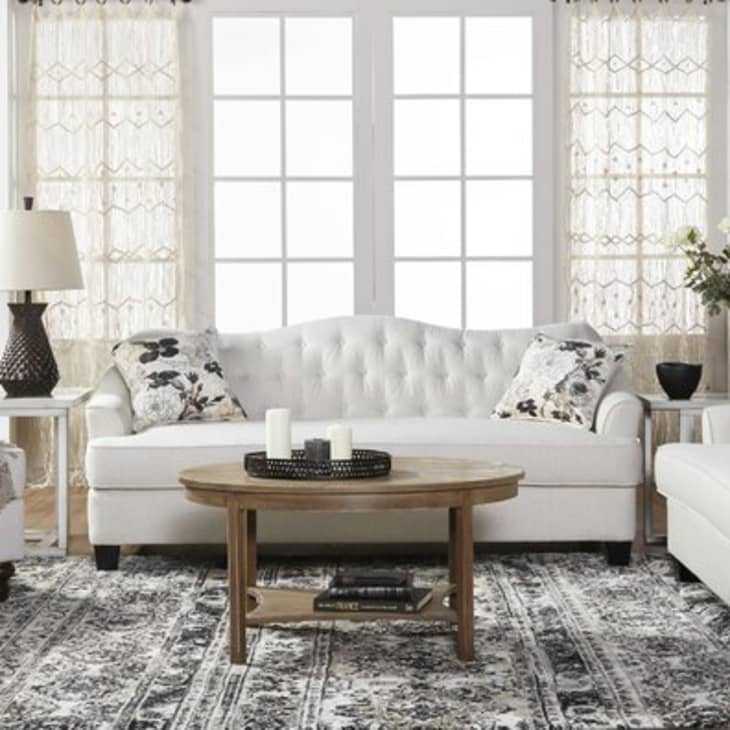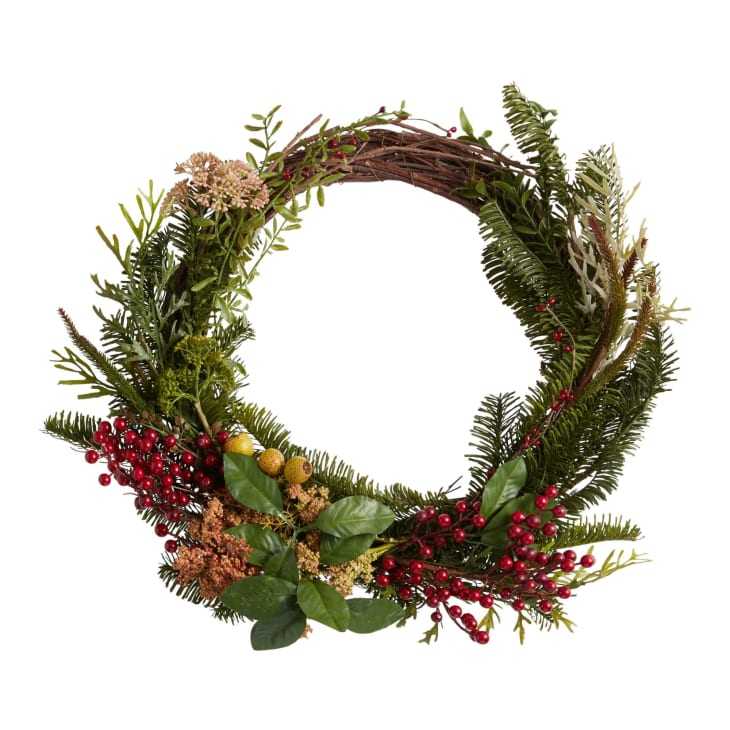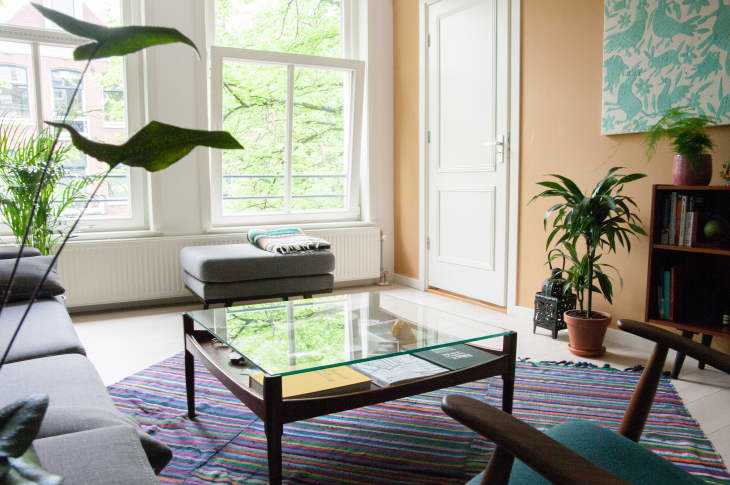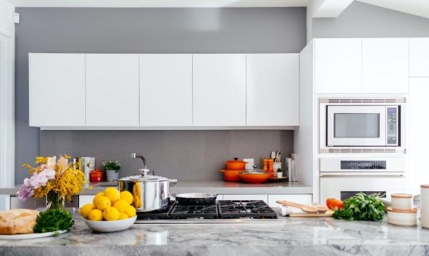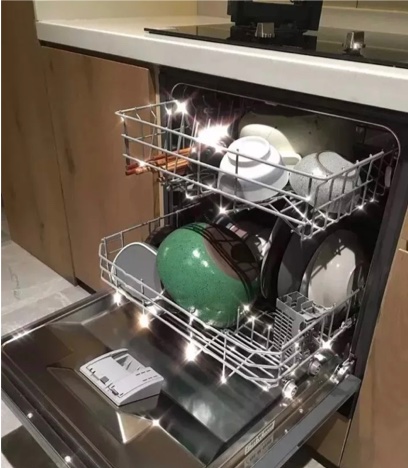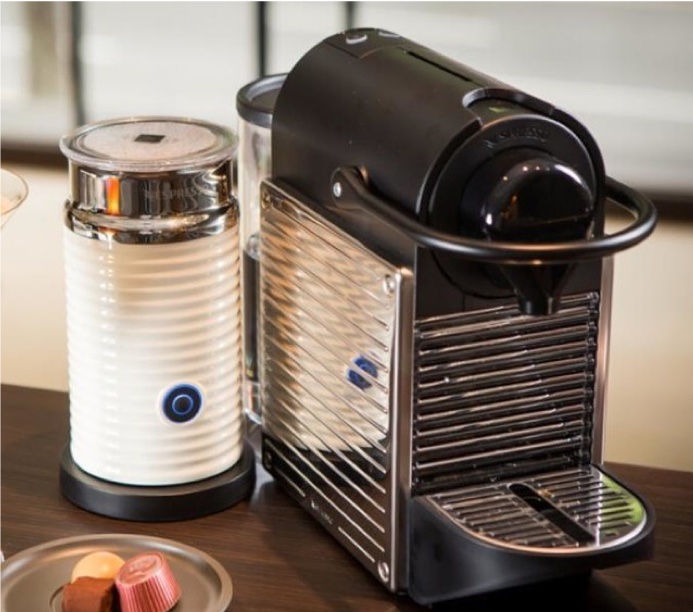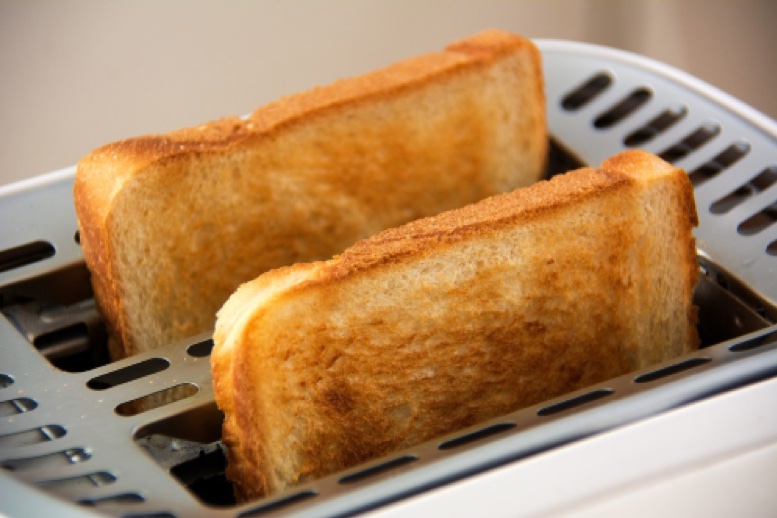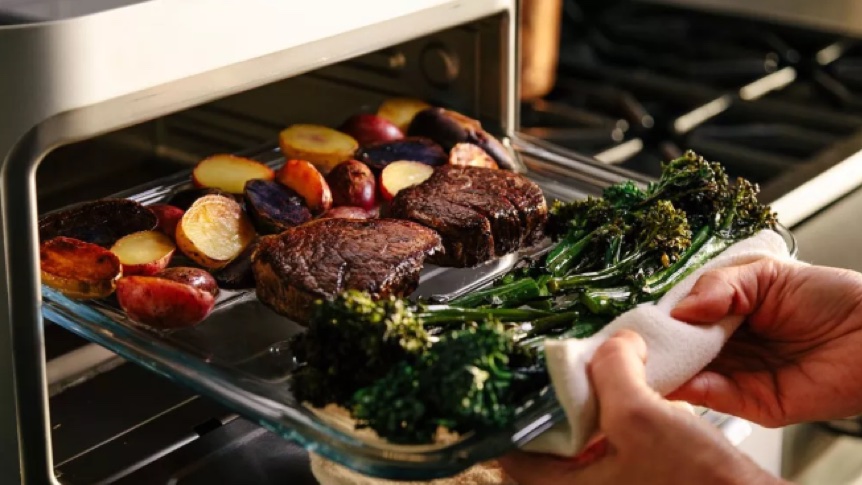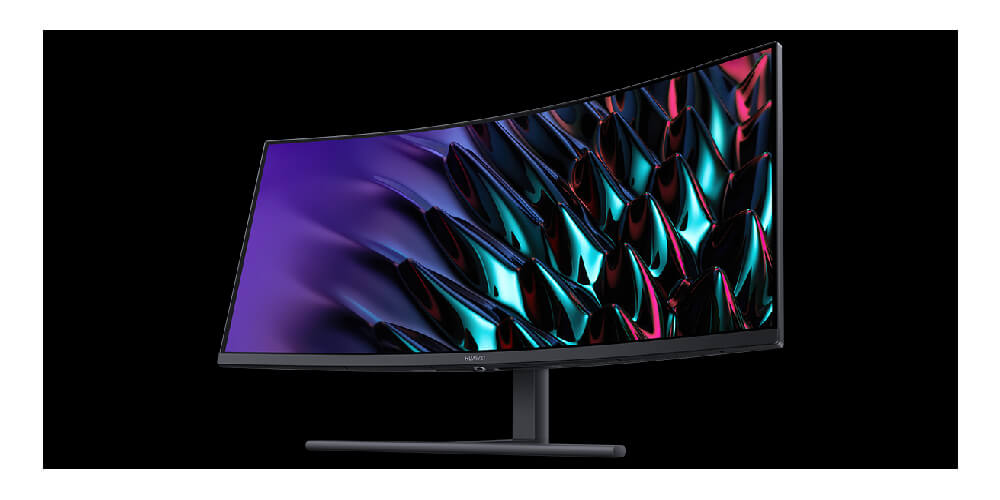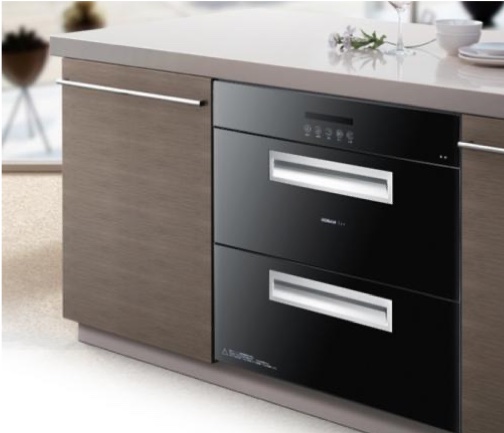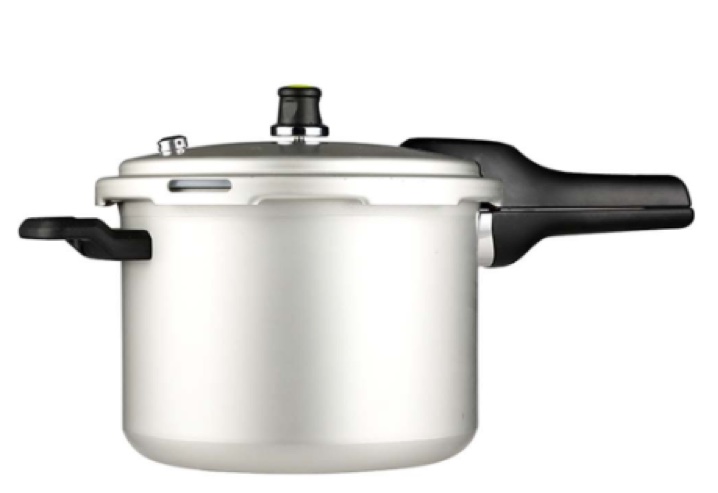My personal "essentials" lists evolve slowly over time, based not only on minor refinements in selection or new product availability, but also on my own cooking style. It's impossible for me to tell you that the pots and pans that I use the most will be the same as the pots and pans you'll use the most. But I can tell you this: I cook a lot, I cook a wide variety of things, and with these pots and pans in my arsenal, I never find myself saying, "Man, I wish I just had [insert pan X here]." In fact, nearly every recipe on this site can be cooked in a kitchen equipped with these bad boys.
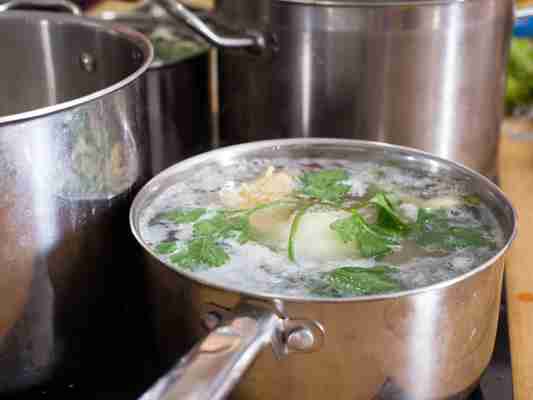
Wherever applicable, I've included two versions: the money-is-no-object best, and a budget-minded alternative.
Vicky Wasik
A 10 1/4– or 12-Inch Cast Iron Skillet
What a cast iron skillet is good for: Heavy cast iron might take a while to preheat properly, but once it's hot, it'll sear a steak like nothing else. Pan-roasting or deep-frying chicken? Reach for the cast iron. Frying latkes or potato pancakes? You guessed it.
Because of its thick gauge, cast iron is also great for slow-cooking or for baking, delivering crisp, golden-brown crusts on everything from golden cornbread to pan pizza.
Lodge 12-Inch Pre-Seasoned Cast Iron Skillet Buy on Amazon
Lodge Blacklock Triple-Seasoned Cast Iron Skillet Buy on Williams-Sonoma
Which cast iron skillet should you buy? Vintage cast iron from a brand like Wagner or Griswold has a smoother, slightly more nonstick finish than modern cast iron, and if you can find it online or in an antique shop, I'd highly recommend it. (Those going this route will want to consult our guide to vintage cast iron restoration for tips on removing rust and old layers of seasoning.) That said, a good modern brand like Lodge will do you just fine. And after extensive testing, we highly recommend the below cast iron skillets—both by Lodge and available in 10.25- and 12-inch sizes. Read our review of the best cast iron skillets, our guide to seasoning, and our tutorial on cleaning and maintaining cast iron, since there are a lot of cast iron myths out there to debunk.
Emily Dryden
A Large Enameled Dutch Oven
What a Dutch oven is good for: Anything that requires heavy searing followed by gentle, even cooking—slow-cooked braises like pot roast, carne adovada, or better-than-Chipotle's barbacoa. It's also handy for soups, like spicy pork, green pepper, and corn soup and hearty escarole and barley. And, of course, Dutch ovens are great for chili, like the best chili ever and Texas-style chili con carne. It's a chili machine.
Le Creuset Enameled Cast Iron 5 1/2-Quart Round Dutch Oven Buy on Amazon
Cuisinart 5-Quart Chef's Classic Enameled Dutch Oven Buy on Amazon
Which Dutch oven should you buy? You can't beat the durability, good looks, and cooking power of a French-made Le Creuset. In our review of the best cast iron Dutch ovens, we found that it heats the most evenly, sears the best, and lasts the longest. At over $300, it's not a cheap toy, but it'll a lifetime. Upgrade it with a stainless steel replacement knob to make it oven-safe at high temperatures for recipes like no-knead bread.
If you're in the market for a cheaper Dutch oven, this Cuisinart Dutch oven was one of our favorite budget options in our review. It's a bit smaller than our other recommendations, but it also costs less than $100, which is a hard-to-beat price.
Photograph: J. Kenji López-Alt
A 12-Inch Straight-Sided Sauté Pan
What a sauté pan is good for: Unlike a skillet, a sauté pan has tall sides set at a right angle to the base, which makes for a larger surface area for searing, better protection against splattering, and plenty of volume. A sauté pan also features a tighter-fitting lid, which makes it great for slow-cooked braises or in-the-oven cooking. Want to wilt a whole mess of greens? This is the pan for you.
Additionally, sauté pans excel at searing or frying large batches of food, like a whole chicken's worth of parts. They're also great at reducing sauces and braising enough food to feed four to six hungry adults. They're especially good for dishes like this braised chicken with Hatch chilies and white beans, or these red wine–braised turkey legs, where its wide surface area can accommodate plenty of beans or sauce while still leaving the surface of the meat exposed, allowing it to crisp as it stews.
All-Clad 3-Quart Stainless Steel Saute Pan With Lid Buy on Amazon
Tramontina Covered Deep Saute Pan Buy on Amazon
Which sauté pan should you buy? All-Clad is the gold standard here, with a relatively lightweight pan that still manages to pack in the power. Better design and construction helps it heat faster and more evenly while still delivering plenty of searing capability.
For a cheaper sauté pan, Tramontina performs nearly as well as the All-Clad at a much lower price. The All-Clad heats faster and cooks a little more evenly, but most folks will be perfectly satisfied with this more economical option.
Photograph: Shao Z.
A Wok
What a wok is good good for: Whether you stir-fry or not, a wok is one of the most versatile tools in the kitchen. It's by far the best vessel for deep-frying; its wide shape and large volume make it easy to fit plenty of food in there, with minimal contact and oil use, and virtually no danger of splattering the stovetop with hot oil (or, worse, overflowing). You can also smoke, braise, and steam in it.
Though you may have heard elsewhere that on Western stoves, a skillet is a better stir-frying vessel, that's simply not true. When tasted side by side, a stir-fry that comes out of a cast iron wok tastes significantly better than one that comes out of a skillet, due to the wok's shape and material, and the manner in which heat it transfers heat. (A wok has a much larger hot area above and around the actual cooking surface, helping to produce that familiar, smoky wok hei flavor that is impossible to achieve in a flat skillet.)
The downside: A wok will not work very well on an electric or induction burner. Take note.
Joyce Chen Flat-Bottom Wok Buy on Amazon
Which wok should you buy? To be honest, any one-and-a-half- to two-millimeter-gauge carbon steel wok will do the job, including kitchen-supply versions, but I like this Joyce Chen wok. As long as you follow our care and maintenance guide, your wok should will achieve a deep black, lustrous nonstick sheen within a few uses.
Vicky Wasik
A Three-Quart Saucier
What a three-quart saucier is good for: A slope-sided saucier performs all of the functions of a straight-sided saucepan, with the added advantage of rounded edges that make whisking and combining ingredients a snap. A three-quart size is just large enough to heat up four to six servings of soup. It'll hold a couple bottles of wine for reducing, but is still a reasonable enough size that you can reduce those bottles down to a cup or two without having to switch over to a smaller pot.
If you like using the low-heat, low-water method of cooking pasta, this pot'll do for that as well. Cook the pasta, drain it, add your sauce directly to the pot, and heat to combine, for a no-mess, no-fuss cleanup. Oh, and it's a good friend to have for boiling and poaching eggs, as well as risotto.
Made In Stainless Clad Saucier Buy on
Which saucier should you buy? This All-Clad 3-Quart Stainless Steel Saucier Pan is ultra sturdy, with superb heat distribution and weight balance. It's got a tight-fitting lid for retaining heat as well. However, it currently it's currently out of stock (or available at a way-too-high, jacked up price). Given that, we recommend the 3-quart Made In Stainless Clad Saucier, which heats evenly, has a comfortable handle, and is reasonably priced at about $100.
Photograph: Vicky Wasik
A 10-Inch Nonstick Skillet
What a 10-inch nonstick skillet is good for: Okay, so if your cast iron skillet is perfectly seasoned, it should be completely nonstick. But for the rest of us mortals, a nonstick-coated pan is a useful tool to have on hand for guaranteed results with omelettes, Spanish tortillas, frittatas, rösti, and the like—things that you don't want getting stuck to the pan halfway through a precarious flipping step.
There are things you can do to maximize a nonstick skillet's lifespan: never use metal utensils on it, wash it only with a soft sponge, refrain from using very high heat, and don't store it with other items stacked inside—but no matter how good you are at caring for them, nonstick pans are going to eventually lose their coating. Stay away from the expensive models unless you have money to burn.
In addition, remember that all-aluminum pans will not work over an induction cooktop, so be sure to check the materials before you buy.
Cuisinart MultiClad Pro Nonstick 10" Open Skillet Buy on Amazon
Which nonstick skillet should you buy? This Farberware Aluminum Nonstick Skillet isn't fancy, but its low price point makes it a good choice. If you're cooking over induction, try the Cuisinart Chef's Classic Stainless Nonstick Skillet for a stainless steel alternative.
Photograph: Vicky Wasik
A Large Stockpot
What a large stockpot is good for: Every kitchen should have at least one big-ass pot for big-ass jobs. Save your chicken and meat scraps and whip this big boy out once a month to make a supply of stock (your cooking will thank you). Need to boil that whole country ham or make enough pasta sauce from fresh tomatoes to last you through the winter? You'll need a really large pot.
Large enough to cook at least four to five pounds of pasta, it'll also solve all of your crowd-feeding problems, making entertaining a snap. Unlike an enameled Dutch oven, you're not really going to be searing or sautéing in your stockpot, so heat distribution and retention aren't much of a concern. Just make sure that the metal is thick enough that you won't burn whatever is resting right against the bottom surface.
Tramontina 16-Quart Gourmet Stainless Steel Covered Stock Pot Buy on Amazon
Cuisinart 12-Quart MultiClad Pro Stainless Stock Pot With Cover Buy on Amazon
Which stockpot should you buy? The Tramontina was the winner in our test to find the best 16-quart stock pot. For slightly smaller (but still large) cooking projects, the Cuisinart MultiClad Pro is our 12-quart pick. Its build is rock-solid, with riveted handles, a snug-fitting lid, and triple-ply stainless steel cladding from the base to the top of the pot’s wall. That thick base layer manages heat well, which means you’re less likely to burn your food.
Photograph: Vicky Wasik
Rimmed Baking Sheets and Cooling Racks
What a rimmed baking sheet is good for: I use rimmed aluminum baking sheets (in the industry, we call them "sheet pans"—I use half-size pans) for the vast majority of my oven tasks, whether it's baking off a tray of cookies, crisping up a tray of potatoes or broccoli, or even roasting a whole turkey or chicken. They're lightweight, inexpensive, and durable. Just be aware: You'll want to keep a separate set of pans and racks for high-temperature roasting and for baking, as the ones used for meats and vegetables tend to get a bit beat up.
Nordic Ware 2-Piece Half Sheet Set Buy on Amazon
CIA Wire Cooling Rack Buy on Amazon
Which sheet and rack should you buy? The NordicWare half-sheet pan, paired with a wire cooling rack, is about the best money can buy, and it's not even much money!
Photograph: J. Kenji López-Alt
A Large Baking Dish (Casserole)
What a casserole dish is good for: Since it's intended for both cooking and serving tableside, a good baking dish should be both functional and attractive. It should be made with high-quality glazed ceramic, meaning that not only will it heat foods evenly (and, more importantly, store that heat so your food stays hot while you're trying to corral the family around the table), but it's practically nonstick. That makes for a simple clean-up, even with gooey foods like this Summer Vegetable Lasagna.
Staub Ceramic Rectangular Baking Dish Buy on Amazon
HIC Harold Import Co. Porcelain Baking Dish Buy on Amazon
Which casserole dish should you buy? In our quest to find the best baking dishes, this Staub casserole performed extremely well in our tests—and would make a splendid serving dish in a pinch.
For a slightly more budget-friendly buy, this porcelain baking dish might be lacking in the looks department, but it's a fine choice for casseroles if pure performance is your only concern.
